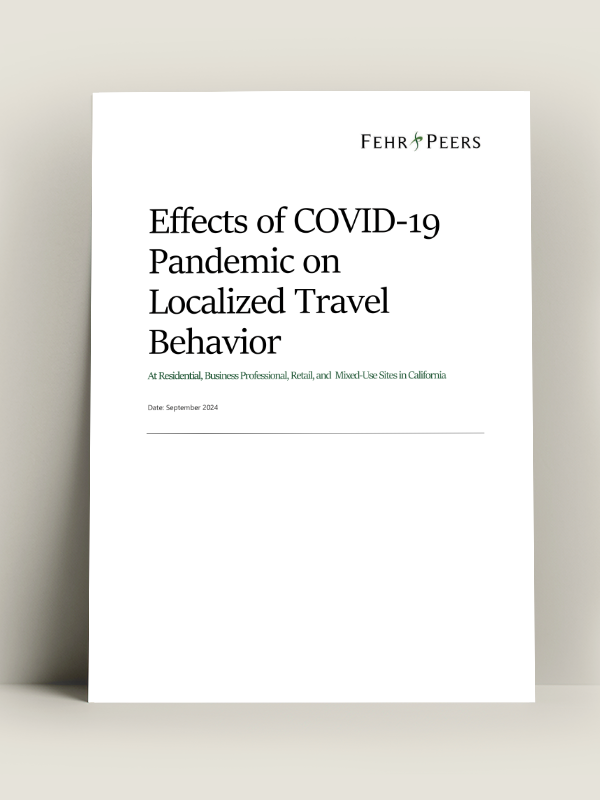Understanding Post-Pandemic Travel
Since the onset of the COVID-19 pandemic, one question we frequently hear from our clients is: How has local travel behavior changed? To help provide answers, we embarked on a self-funded research effort, collecting pre-COVID and 2022/2023 traffic data at residential, retail, and mixed-use sites across California. We also conducted multi-day surveys at large office parks, one of the land uses most affected by the pandemic.
Our findings reveal significant shifts in travel patterns, especially at office buildings, where trip generation rates have dropped well below the rates set by ITE’s 2021 Trip Generation Manual, which consists entirely of pre-COVID data. These insights could have important implications for transportation planning, from travel demand models to infrastructure forecasting and fee programs.
For a deeper look at the data and what it means for future planning, check out our full white paper. Questions? Feel free to reach out to the report’s primary author, John Gard, PE, RSP1.
Contributors
John Gard
Email Me
Brian Wolfe
Email Me
Explore More
Pushing the Envelope on Parking Studies
Circling for parking is a universal experience that few of us enjoy. See how one community is expanding on a typical parking study to dial in stronger recommendations for accessibility and safety.
Understanding Traveler Behavior Pt. 1
Discover how Activity-Based Models and transportation economics can play a key role in shaping transportation infrastructure decisions.
2024 New Shareholders
Congratulations to the newest Fehr & Peers shareholders! Their dedication and passion is a testament to their hard work.






